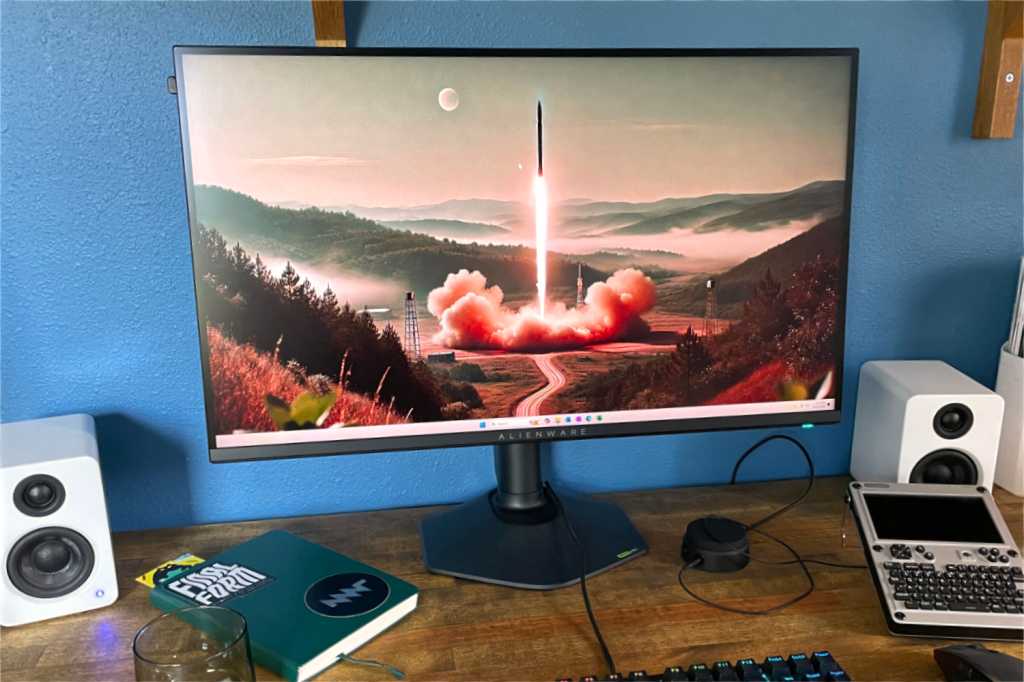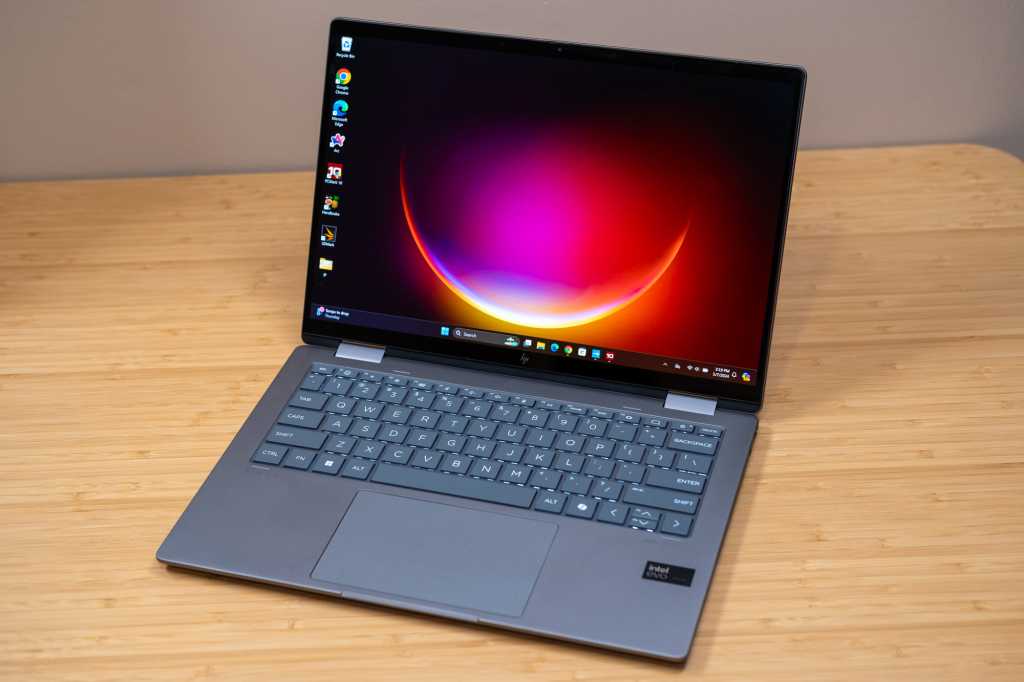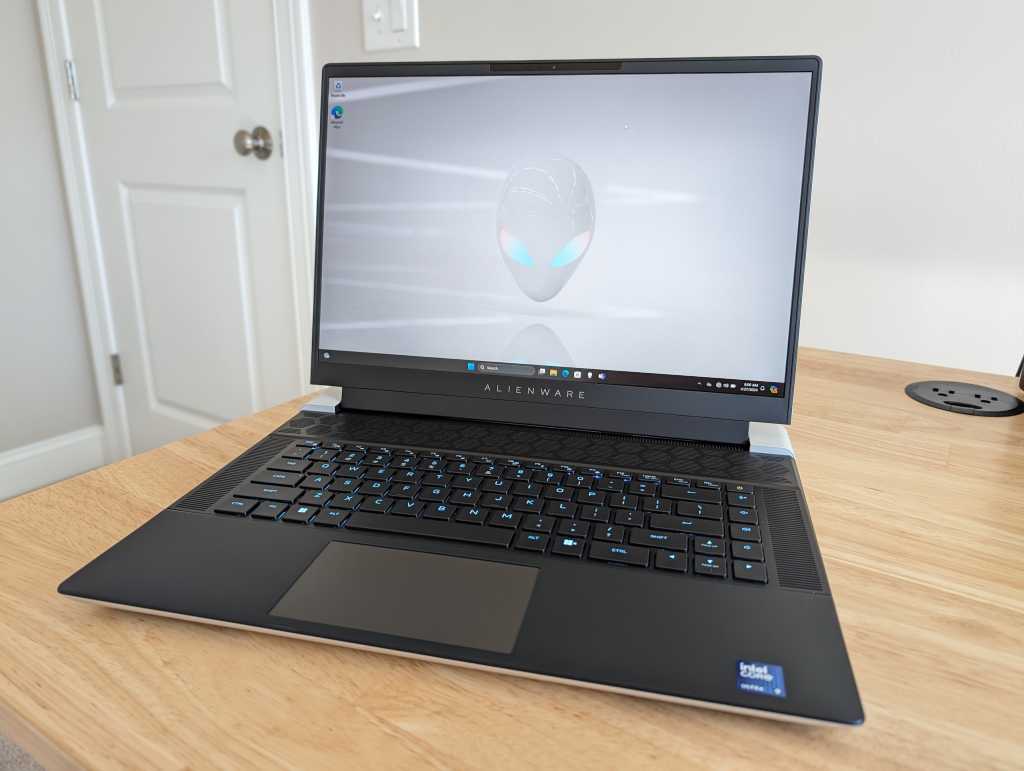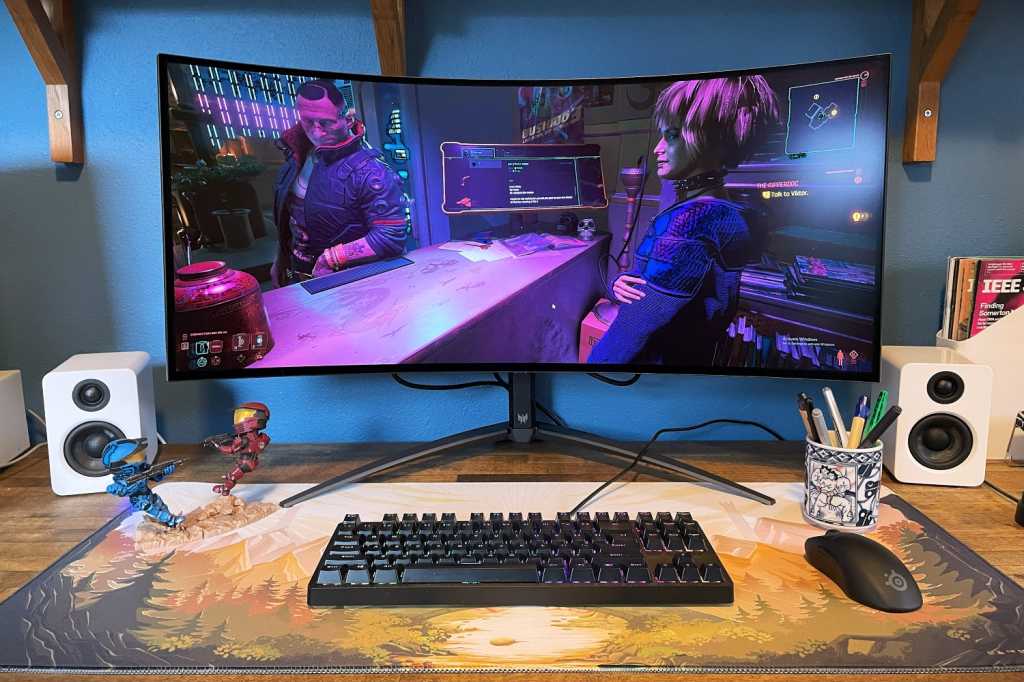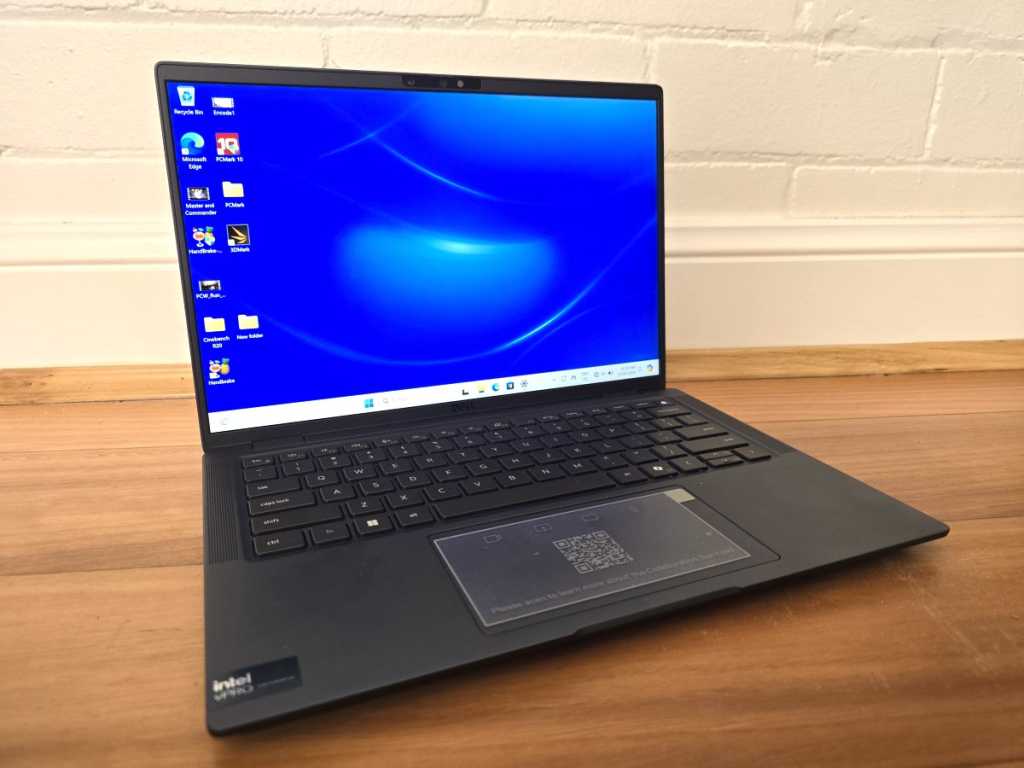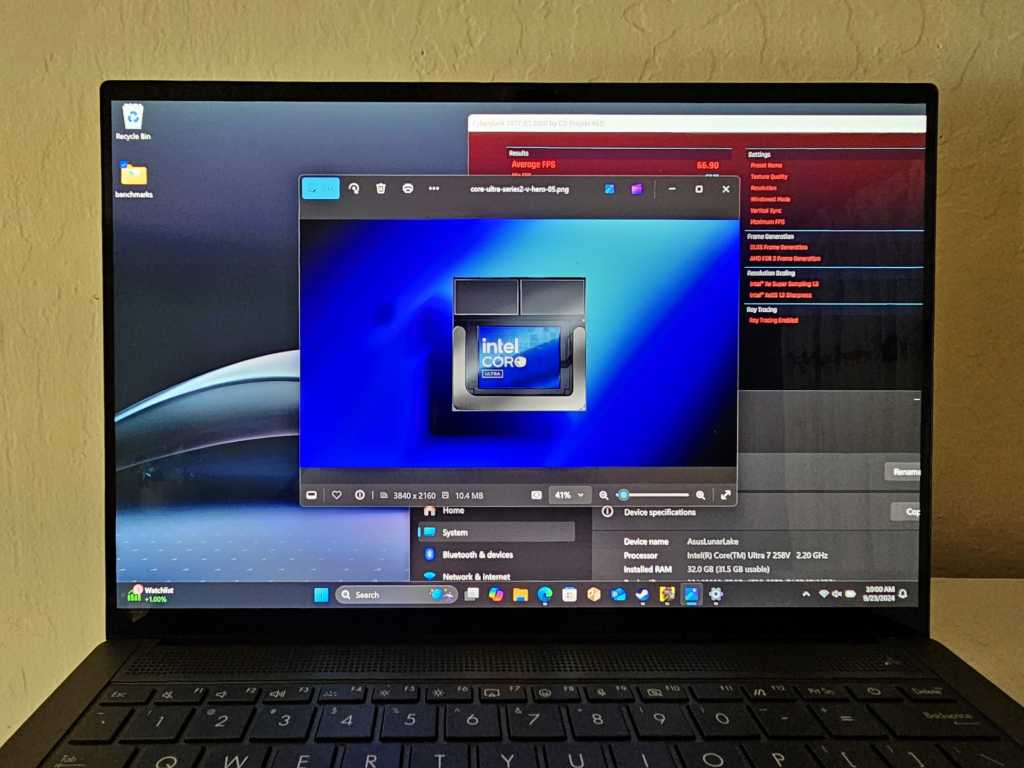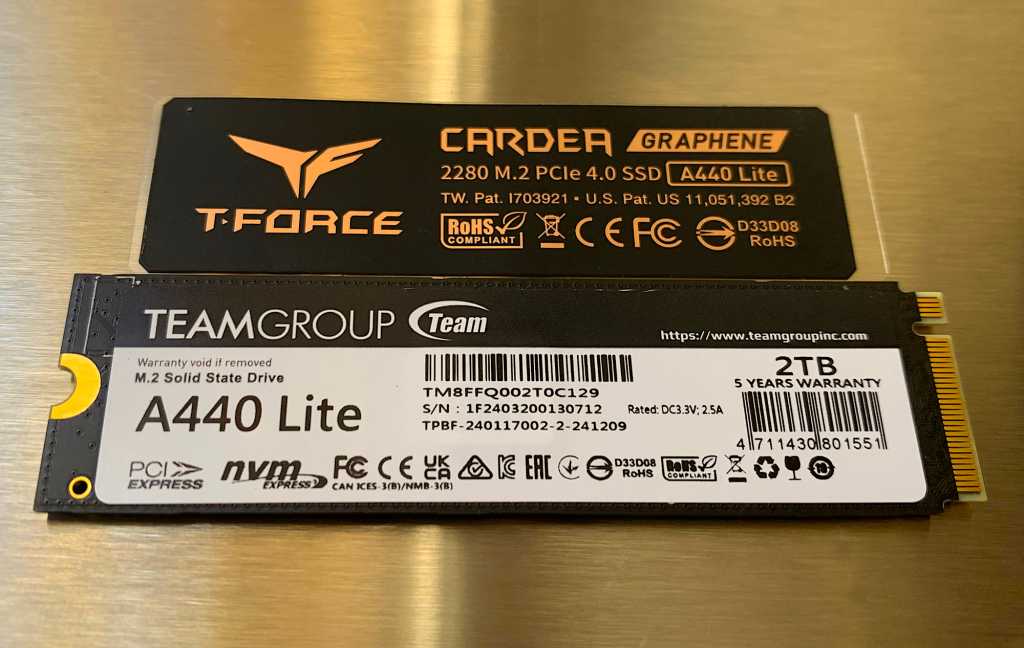The Alienware AW2725QF boasts a unique “dual-resolution” feature, offering 4K at up to 180Hz and 1080p at a blistering 360Hz. This versatility aims to cater to gamers seeking both crisp visuals and ultra-smooth motion. However, its reliance on a standard IPS panel without Mini-LED backlighting raises concerns about contrast and color performance, especially given the competitive landscape of gaming monitors.
Alienware AW2725QF: Specs and Features
The AW2725QF’s dual-resolution capability is its standout feature. While 4K at 27 inches is becoming increasingly common, the option to switch to 1080p for a 360Hz refresh rate sets it apart.
- Display Size: 27-inch, 16:9 aspect ratio
- Resolution: Dual-mode: 1920×1080 / 3840×2160
- Panel Type: IPS
- Refresh Rate: Up to 360Hz (1080p), up to 180Hz (4K)
- Adaptive Sync: VESA Adaptive Sync, Nvidia G-Sync Compatible
- HDR: VESA DisplayHDR 600 certified
- Ports: 2x HDMI 2.1, 1x DisplayPort 1.4, 1x USB-B 3.2 Gen 1 (upstream), 3x USB-A 3.2 Gen 1 (downstream), 1x USB-C 3.2 Gen 1 (downstream)
- VESA Mount: 100x100mm
- Speakers: No
- Price: $599.99 MSRP
Beyond the display, the specs are fairly standard. HDR support, Adaptive Sync, and multiple video inputs are expected at this price point. The USB hub functionality is somewhat limited, however, and the lack of a USB-C video input is a notable omission in today’s market.
Design and Build
The AW2725QF carries the distinct Alienware “Legend” design language with its futuristic aesthetic and customizable RGB lighting. Build quality is solid, although the overall thickness is noticeable compared to the slimmer profiles of newer OLED monitors.
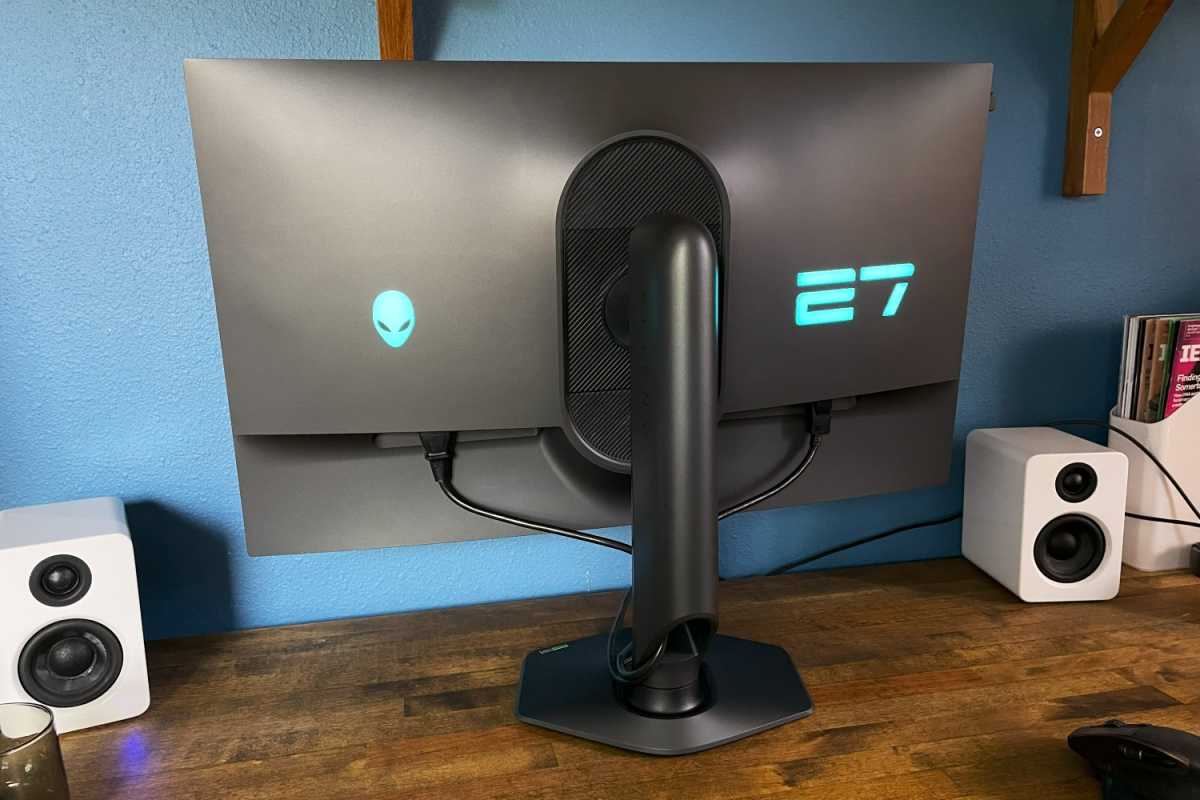
The included stand is robust, offering height, tilt, pivot, and swivel adjustments. Its compact hexagonal base minimizes desk footprint, a welcome feature for smaller setups. VESA mounting is also supported for those who prefer third-party arms or stands.
Connectivity and On-Screen Display
The AW2725QF offers two HDMI 2.1 ports and one DisplayPort 1.4, all capable of supporting the monitor’s maximum refresh rate and resolution in both 1080p and 4K modes. The absence of a USB-C video input, however, limits its connectivity options for modern laptops and tablets.
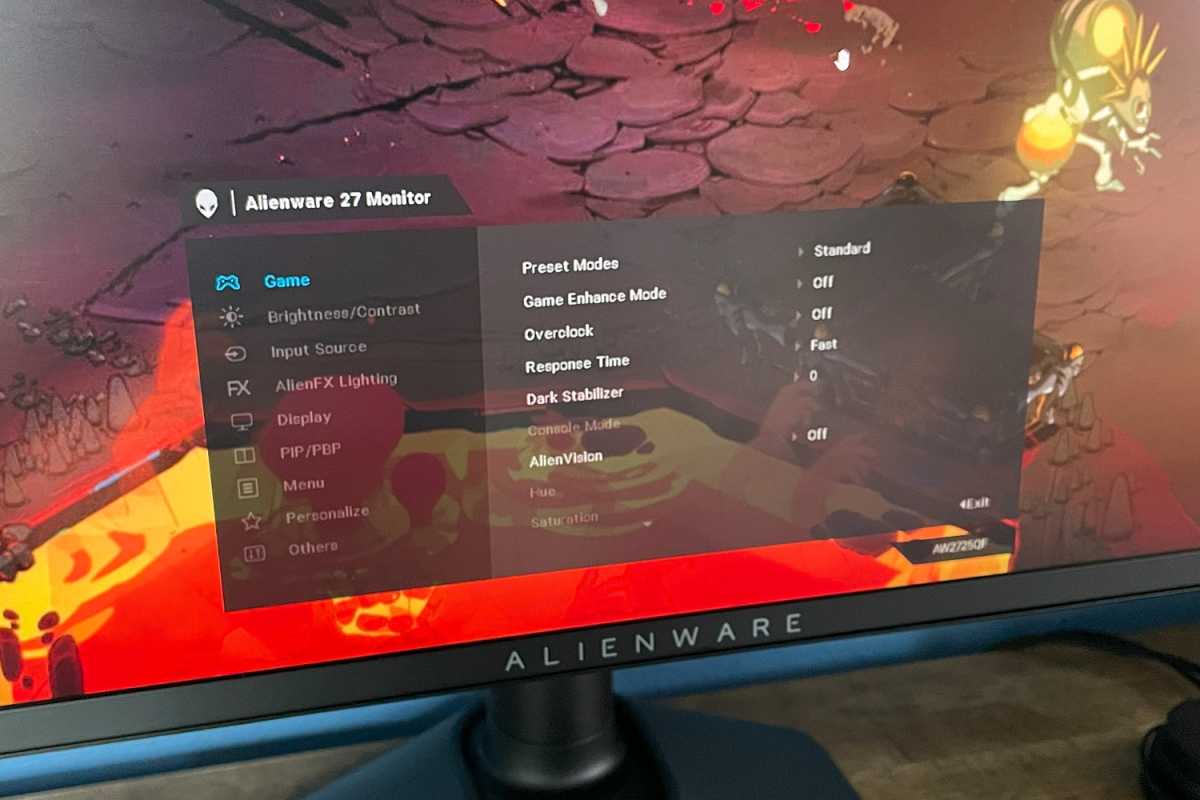
Navigating the on-screen display is handled by a responsive joystick. While the menu structure is logical, the small, low-contrast text could benefit from improvement. Customization options are decent, including custom color modes and gaming-centric features, but some advanced settings are oddly restricted to specific modes. The lack of a 3.5mm audio output is an unexpected inconvenience.
SDR Image Quality: A Mixed Bag
The AW2725QF’s SDR image quality presents a trade-off. While brightness is a strong point, reaching an impressive 518 nits, the contrast ratio falls short at just 1150:1. This leads to noticeable IPS glow and uniformity issues in darker scenes, impacting immersion in games and movies.
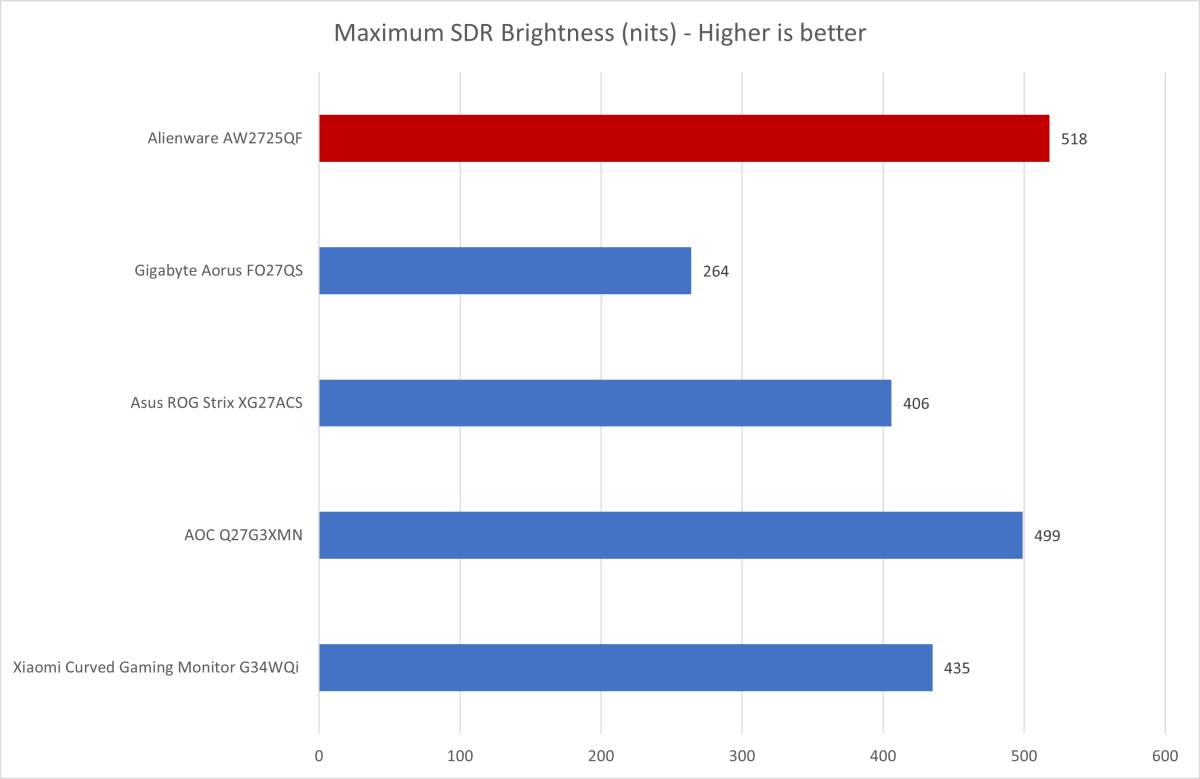
Color gamut coverage is adequate for gaming, producing vibrant visuals, but falls behind some competitors. Color accuracy is good but not exceptional. Fortunately, color temperature and gamma are spot-on at 6500K and 2.2, respectively.
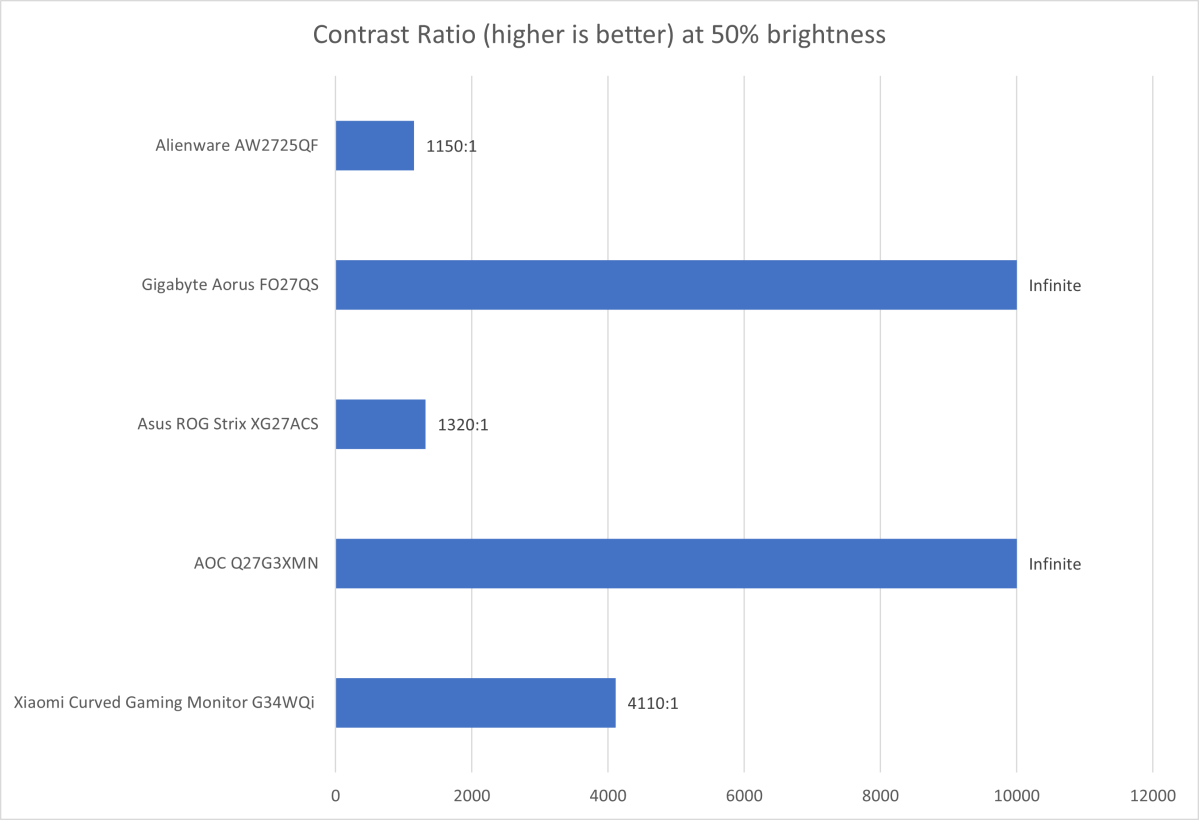
Sharpness at 4K is excellent, surpassing 1440p OLED alternatives. However, the semi-gloss anti-glare coating is a compromise that may not appeal to everyone. Overall, the AW2725QF’s SDR image quality is suitable for productivity but less impressive for gaming and entertainment.
HDR Performance: Disappointing
Despite its VESA DisplayHDR 600 certification, the AW2725QF’s HDR performance is underwhelming. While peak brightness reaches 614 nits, the limited contrast ratio continues to hold it back. Dark scenes lack depth, and the overall HDR experience feels flat.

Compared to OLED and Mini-LED monitors in a similar price range, the AW2725QF’s HDR performance is simply not competitive. For those seeking a compelling HDR experience, other options are readily available.
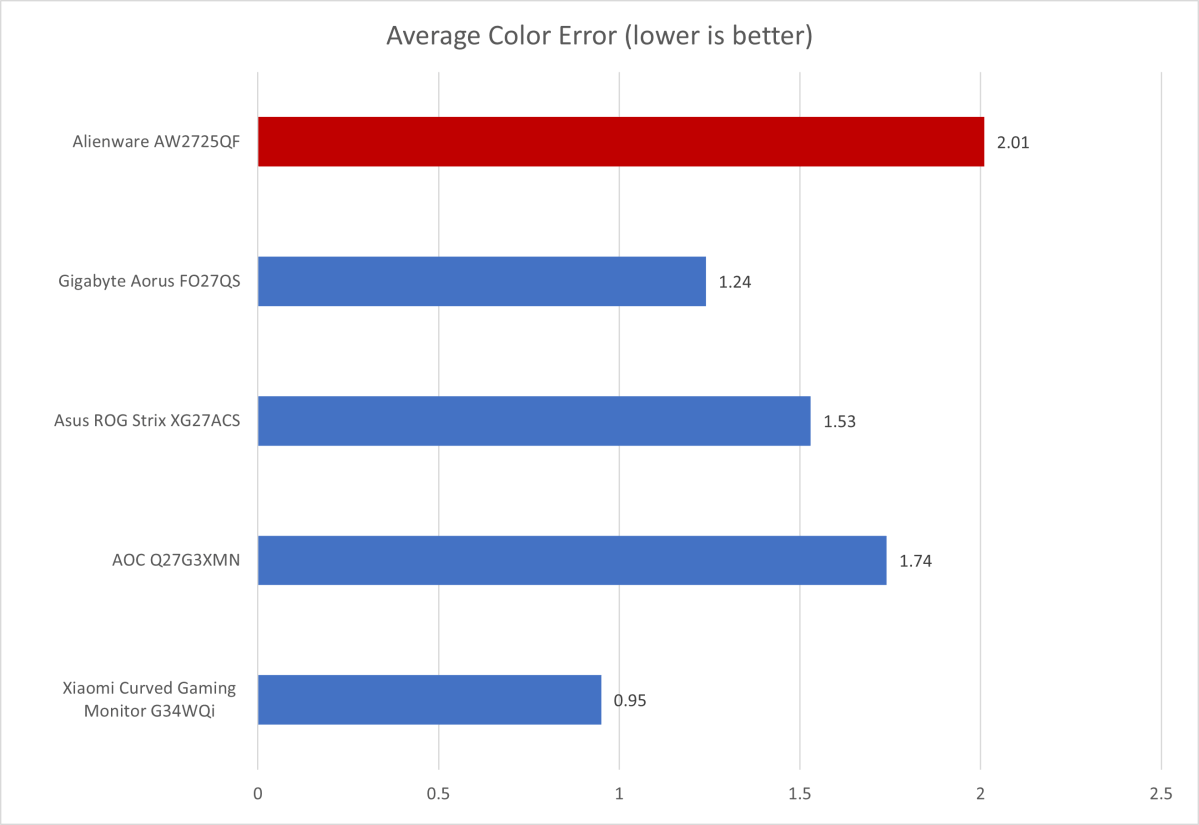
Motion Handling: A Strong Point, But Facing Competition
Motion clarity is undoubtedly the AW2725QF’s strength. Both the 4K/180Hz and 1080p/360Hz modes deliver exceptionally smooth gameplay. The dual-resolution feature allows gamers to prioritize sharpness or responsiveness depending on the game.
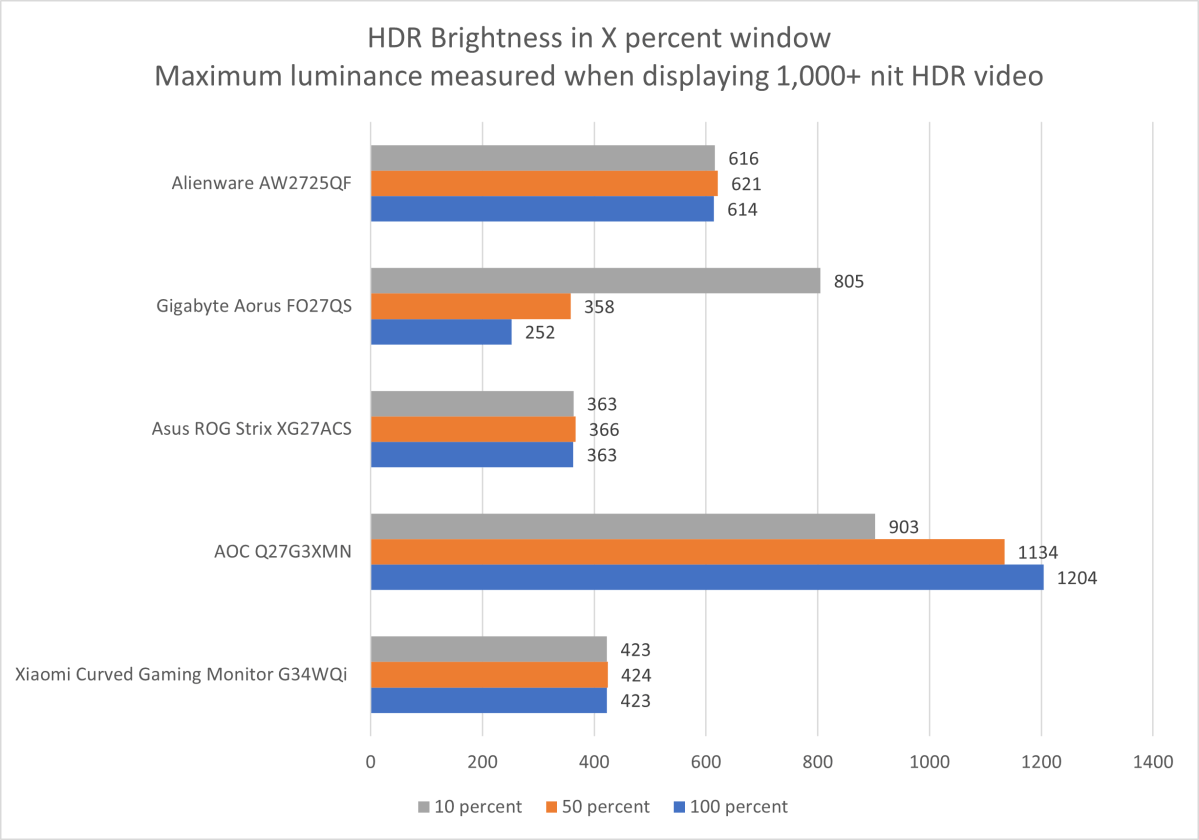
However, the emergence of affordable OLED monitors with high refresh rates poses a significant challenge. While the AW2725QF offers 4K resolution, the superior contrast and color performance of OLED alternatives may be a more compelling proposition for many gamers.
Conclusion: A Niche Offering
The Alienware AW2725QF attempts to carve a niche with its dual-resolution functionality and high refresh rates. However, its mediocre image quality, particularly in terms of contrast and HDR, makes it difficult to recommend over increasingly affordable OLED and Mini-LED alternatives. While its motion clarity is excellent, the compromises in other areas may leave gamers wanting more.



